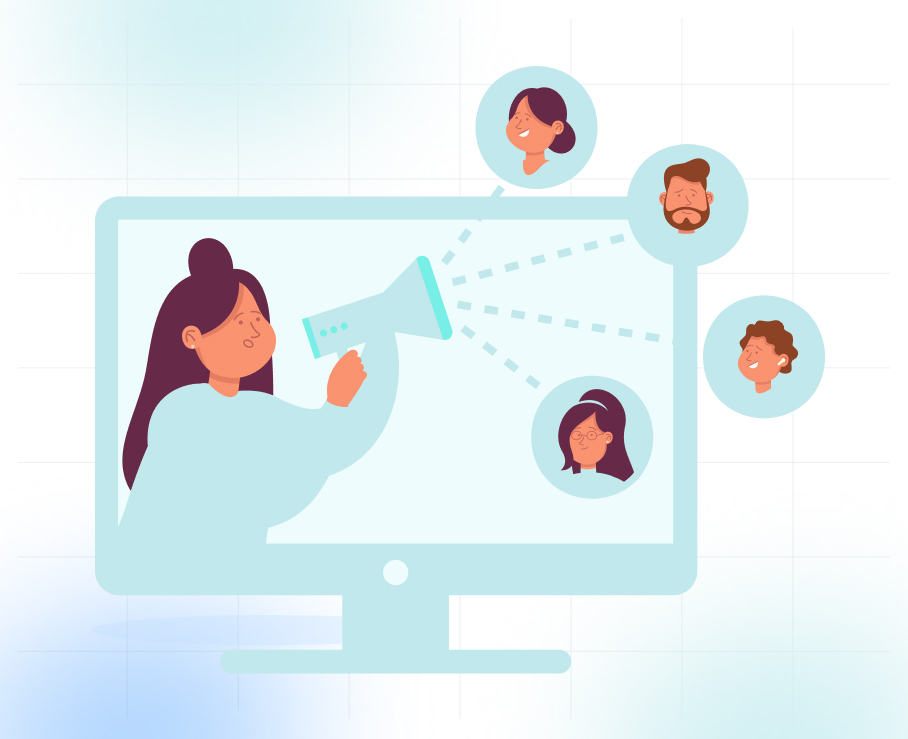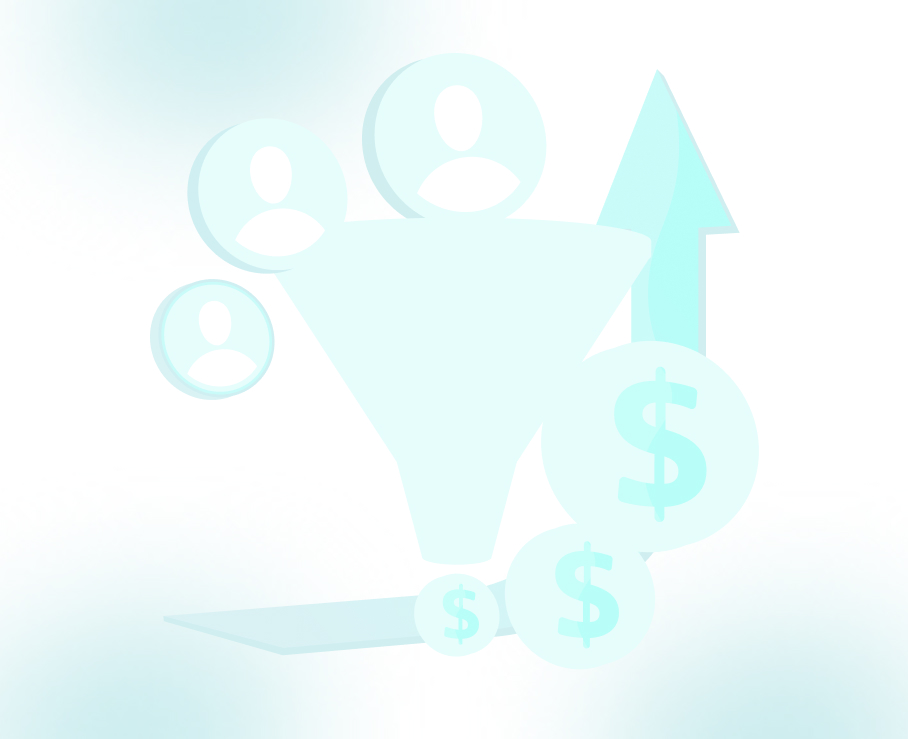
Mastering Cold, Warm, and Hot B2B Sales Leads

In B2B sales, the real challenge isn’t finding leads, it’s knowing which ones are worth pursuing right now. A large pipeline might seem like a win at first, but if most of those contacts aren’t ready to buy, sales teams spend more time persuading than actually closing deals.
This is where lead readiness comes in. By identifying how far along a prospect is in their buying journey, sales teams can focus on the opportunities most likely to convert. That means less time chasing dead ends, more time building relationships with decision-makers, and a healthier ROI on sales efforts.
In this article, we’ll break down how a clear lead readiness framework works, why it directly impacts conversion rates, and how to put it into practice without adding unnecessary complexity to your sales process.
Key Takeaways
- Prioritize leads based on readiness: cold (awareness), warm (consideration), and hot (ready to buy).
- Use clear, agreed-upon criteria, behavioral signals, firmographics, and buying intent to classify leads accurately.
- Tailor outreach strategies to each stage: educate cold leads, nurture warm leads, and close hot leads swiftly.
- Employ multiple channels strategically, email, webinars, and industry groups, to maintain consistent, relevant engagement.
- Monitor engagement metrics regularly using dashboards to update lead status and focus efforts effectively.
- Align sales and marketing on definitions and processes to avoid wasted resources and missed opportunities.
- Continuous nurturing and timing are key; steady contact without pressure builds trust and moves leads forward.
Understanding Cold, Warm, and Hot Leads in B2B Sales
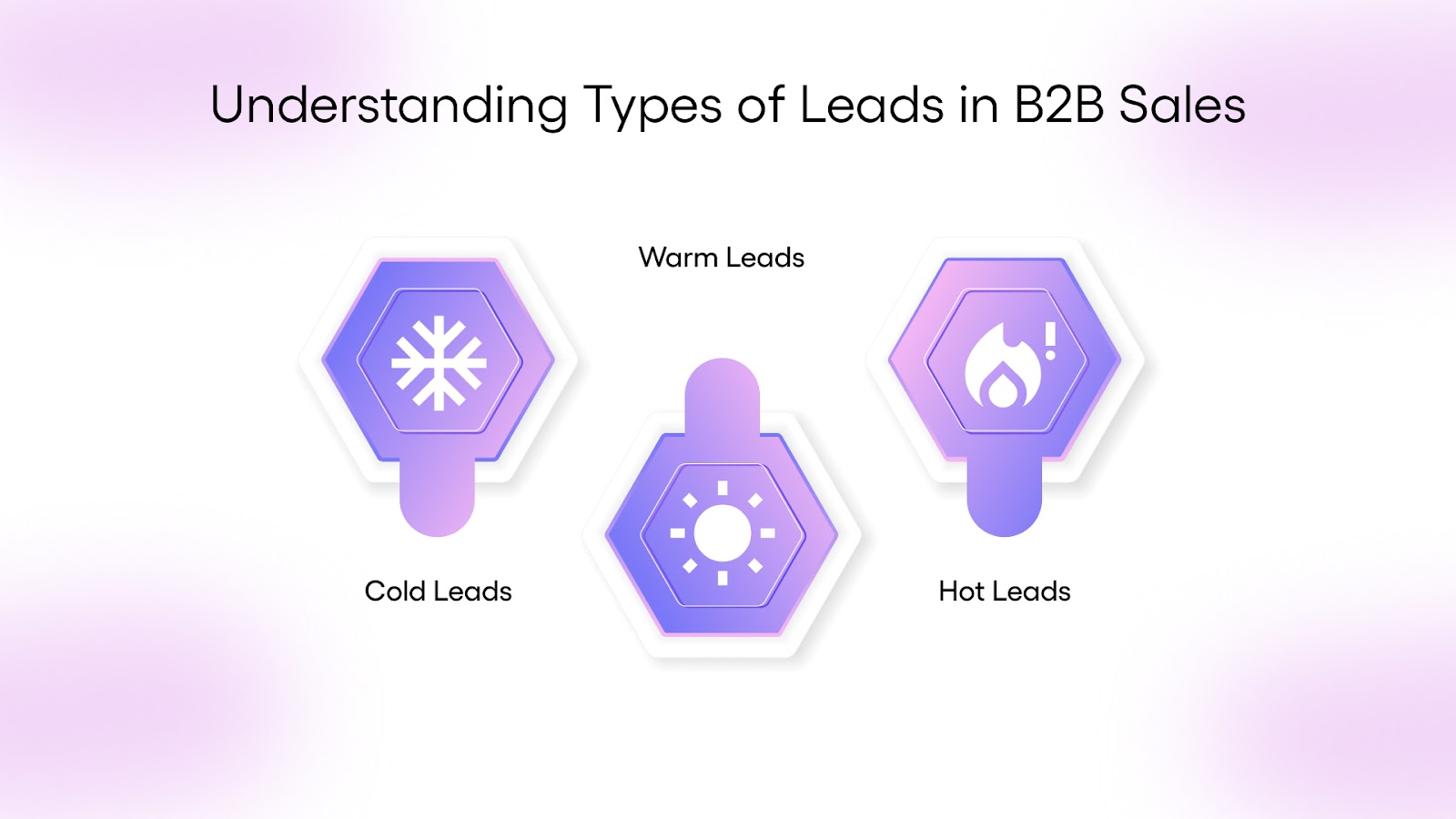
Not every prospect represents the same opportunity. In B2B sales, understanding where a lead stands in their buying journey is critical because the stage they’re in will dictate how you communicate, the pace of your follow-up, and the likelihood of conversion. Categorizing leads as cold, warm, or hot allows sales teams to prioritize effectively and apply the right approach at the right time.
Cold Leads
Cold leads are at the earliest stage of awareness. They may not know your company, may not be looking for your type of solution, and in many cases, may not even realize they have a problem worth solving.
Typical traits:
- Little to no engagement with your brand.
- No visible buying intent.
- Often come from unqualified or broad data sources.
Examples:
- Names on purchased contact lists.
- Newsletter subscribers who have never interacted beyond signing up.
- Individuals who sent a brief inquiry but never replied to follow-ups.
Cold leads need education before they need a sales pitch. This is where targeted campaigns, useful content, and credibility-building efforts come in. The goal is to introduce your value, earn attention, and gradually move them toward interest, without overwhelming them too early.
With TLM’s targeted campaigning, MSPs can focus on the right industries, roles, and services, delivering messages that resonate and convert. Whether you’re zeroing in on niche markets or speaking directly to decision-makers, we help you cut through the noise and book quality conversations faster.
Warm Leads
Warm leads are aware of your business and have shown some interest, but they are still in the consideration phase. They could be researching options, exploring alternatives, or deciding if the problem is urgent enough to solve now.
Typical traits:
- Have engaged with your marketing materials in meaningful ways.
- Show curiosity, but haven’t requested a proposal or pricing.
- Still weighing their options.
Examples:
- Prospects who repeatedly open and click through email campaigns.
- Visitors who return to key product or service pages on your site.
- Attendees at your webinars or events who interact but don’t yet ask for a quote.
Warm leads respond well to nurturing. This means providing case studies, ROI examples, product comparisons, and timely follow-ups. The aim is to keep your company top of mind and make it easy for them to move forward when they’re ready, without pushing them before they are.
Hot Leads
Hot leads are ready to buy. They have a defined need, the authority to make the decision, and the budget to proceed. They are actively evaluating vendors and solutions, often on a short timeline.
Typical traits:
- Requesting demos, pricing, or proposals.
- Asking detailed technical or implementation questions.
- Strong alignment between their needs and your offering.
Examples:
- Inbound demo requests from decision-makers.
- Formal RFP invitations.
- Referrals where the project scope and urgency are already confirmed.
Hot leads require speed and precision. At this stage, the sales conversation should focus on resolving final concerns, reinforcing why your solution is the best fit, and removing any barriers to closing. Quick, relevant follow-up can make the difference between winning and losing the deal.
A well-defined cold–warm–hot framework helps sales teams concentrate on the most viable opportunities, ensures outreach is aligned with buying intent, and shortens the time from first contact to signed agreement. In competitive markets, that precision often determines who closes the deal.
Read: What Your Sales Team Should Do with Marketing Qualified Leads
Setting Clear Lead Classification Criteria
Accurately categorizing a lead as cold, warm, or hot requires more than subjective judgment. It depends on clear, standardized criteria that both sales and marketing teams recognize and apply consistently. Without this alignment, organizations risk misallocating resources, pursuing prospects that are not yet ready to engage, or overlooking those with immediate buying potential.
A practical classification system draws from three key data sources:
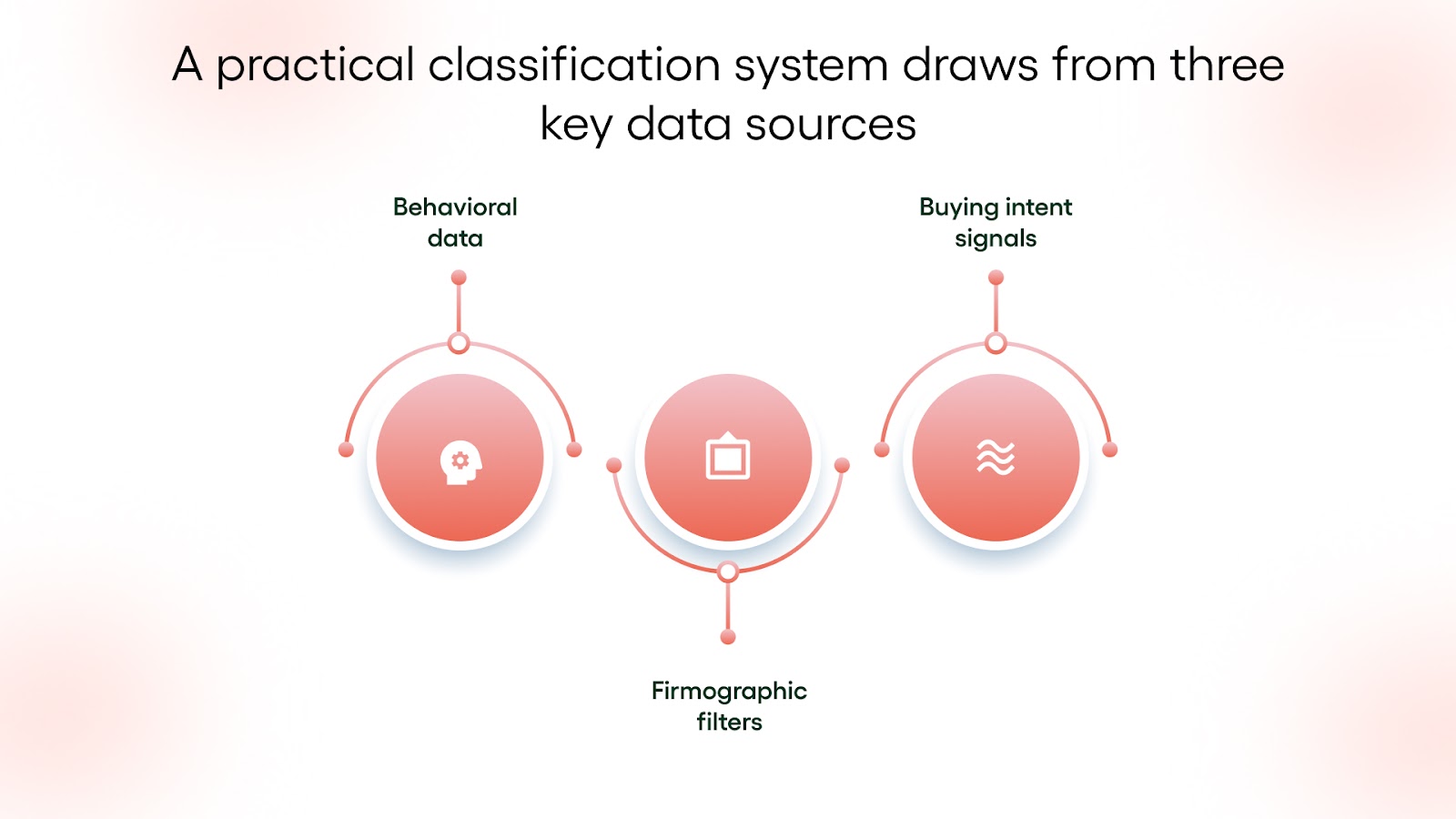
- Behavioral data – Track how prospects interact with your brand over time. Metrics such as email opens, link clicks, whitepaper downloads, webinar attendance, or repeated visits to high-intent pages (like pricing or case studies) reveal how engaged they are and where they might be in the buying process.
- Firmographic filters – Not every engaged prospect is a fit. Company size, location, industry, and decision-maker role can help narrow focus to the types of accounts most likely to convert into profitable customers. This prevents resources from being spent on businesses outside your target profile.
- Buying intent signals – Some actions speak louder than others. A request for a demo, a direct pricing inquiry, or participation in a vendor evaluation process are strong indicators that a lead is ready for a sales conversation. These should trigger fast, tailored follow-up.
The most important step is alignment between marketing and sales. Both teams must agree on the definitions of cold, warm, and hot leads, as well as the actions that qualify a lead for each category. This avoids the common problem of marketing passing along contacts that sales deems “not ready,” and ensures that hot leads are acted on before the competition does.
When classification criteria are clear, lead management becomes less subjective and more predictable, allowing teams to prioritize effectively and improve conversion rates across the funnel.
Read: How to Create Effective B2B Buyer Personas with Examples
Outreach Strategies for Each Lead Type
Different lead stages require different outreach methods. The depth of engagement, type of messaging, and speed of follow-up should align with where the prospect is in their buying journey.
Cold Leads — Establish Awareness and Credibility
For cold leads, the primary objective is to create recognition and build trust before expecting a sales conversation.

- Segment before outreach – Define audience subsets based on industry, job role, or challenge to ensure messaging relevance.
- Content-led engagement – Distribute articles, whitepapers, and research reports that address industry trends or challenges without pushing a direct sale.
- Soft-touch social outreach – Use LinkedIn connections, thoughtful comments on posts, and targeted ads to create familiarity.
- Lead magnet campaigns – Offer downloadable resources in exchange for basic contact information, initiating a non-intrusive entry point into your funnel.
Warm Leads — Strengthen Engagement and Advance Towards a Decision
Warm leads have shown interest, so the focus shifts to nurturing them with information and proof points that reduce uncertainty.
- Pain-point–driven messaging – Send targeted email sequences that directly address their known challenges.
- Invite to exclusive engagements – Webinars, roundtable discussions, or limited product previews that deepen the relationship.
- Social proof delivery – Share case studies, ROI statistics, and testimonials relevant to their sector or role.
- Behavior-triggered follow-up – Respond to specific actions (e.g., multiple visits to a pricing page) with tailored outreach.
Hot Leads — Accelerate the Close
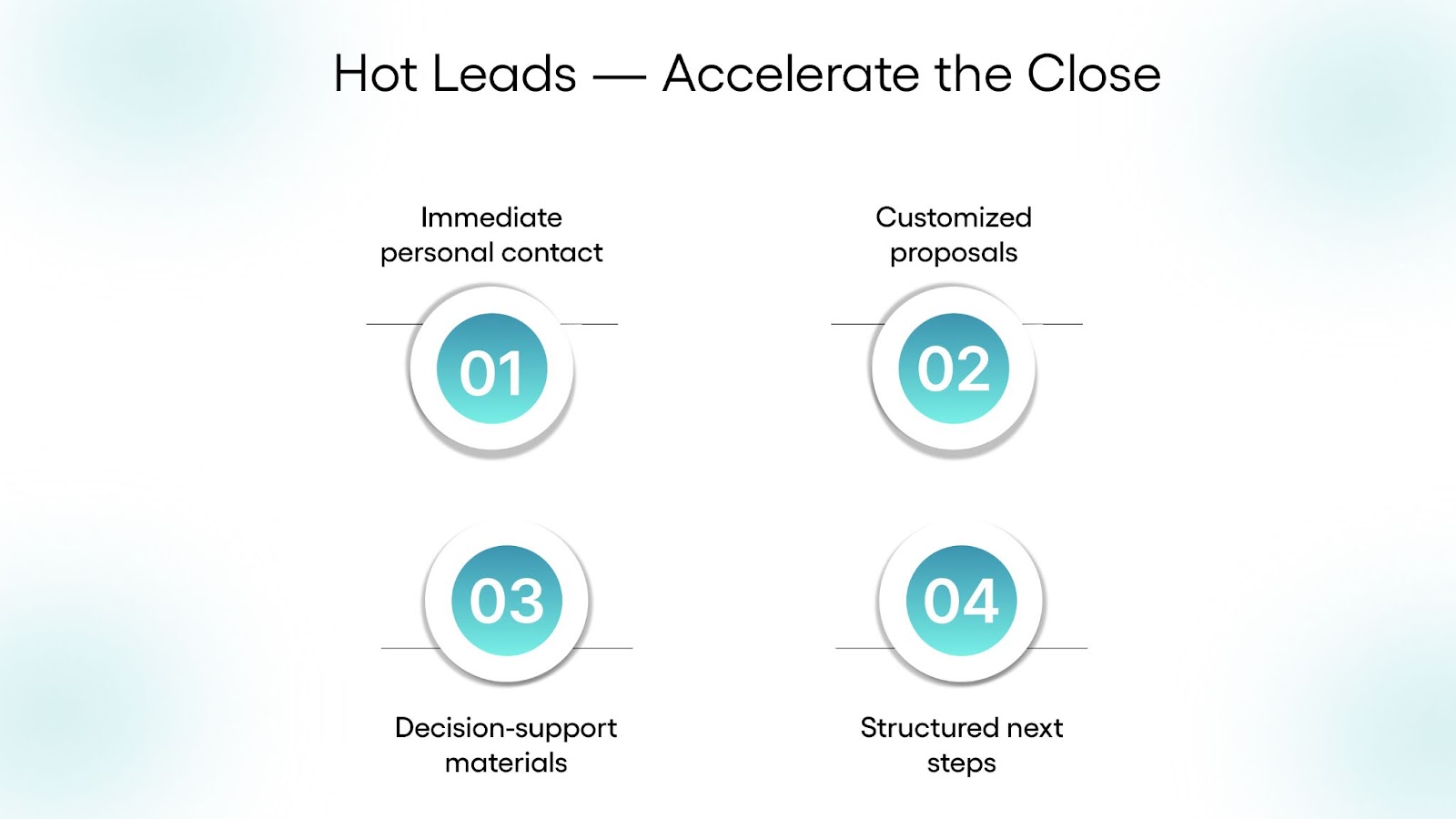
Hot leads require timely, precise, and personalized handling to prevent delays or loss to competitors.
- Immediate personal contact – Direct outreach from a senior sales rep within hours of the trigger event.
- Customized proposals – Include clear ROI projections, implementation timelines, and competitive differentiators.
- Decision-support materials – Provide comparison charts, technical documentation, and references to remove final barriers.
- Structured next steps – Outline onboarding, training, and support to give a clear vision of the post-sale experience.
Following a clear process not only saves time but also keeps your schedule predictable. Start with the steps above, refine them over time, and you’ll have a reliable employee work schedule that runs smoothly.
Read: How to Master Lead Generation and Management Techniques
Using Multiple Channels to Engage Leads
Engaging prospects effectively means meeting them where they already spend their time and providing value in a format they’re most likely to respond to. A single touchpoint is rarely enough in B2B; using a combination of channels ensures consistent visibility and varied opportunities for interaction.
Key channels to consider:

- Email Outreach for Ongoing Nurture
Well-crafted, personalized emails allow you to maintain steady contact without overwhelming the recipient. Share content that addresses specific challenges relevant to their role or industry, rather than generic updates.
At The Lead Market (TLM), email outreach is built around generating qualified opportunities, not just activity. Every campaign is timed and targeted to spark relevant conversations and keep your solution in front of the right decision-makers until they’re ready to move forward.
- LinkedIn for Direct Outreach and Authority Building
Beyond sending connection requests, use LinkedIn to publish thought leadership, comment on industry discussions, and engage with target accounts’ content. This positions you as a credible resource rather than just another sales pitch. - Webinars and Educational Events
Hosting or participating in online sessions offers a platform to demonstrate expertise while addressing real-world problems your audience faces. These events also give prospects a low-pressure way to evaluate your solution in action. - Industry Forums and Professional Groups
Participating in relevant online communities, whether niche forums, LinkedIn groups, or association networks, lets you contribute insights and solutions in spaces where your prospects actively seek advice.
A multi-campaign approach doesn’t mean running every campaign type possible; it means selecting the ones that align best with your audience’s habits and using each strategically to move leads closer to a decision.
Read: A Beginner's Guide to Organic Lead Generation Strategies
Moving Leads from Cold to Warm to Hot
Successfully advancing leads through the sales funnel requires strategic nurturing tailored to their current level of interest. Each stage demands a different approach to engagement that respects the prospect’s readiness to buy.
- Cold leads need informative content that builds awareness without sales pressure.
- Warm leads respond well to personalized messaging that addresses their specific challenges and demonstrates value.
- Hot leads require focused, solution-oriented conversations aimed at closing the deal.
- Timing is critical; engage cold leads steadily, but act quickly when leads show buying signals.
- Maintain consistent communication to build trust and keep your brand top of mind throughout the journey.
Effective lead nurturing increases conversion rates by aligning outreach with the prospect’s evolving needs. This disciplined approach ensures you invest resources where they will deliver the greatest return.
8. Monitoring Engagement and Updating Lead Status
Keeping a close eye on how leads interact with your outreach efforts is essential to accurately assess where they stand in the sales process. Without ongoing evaluation, sales teams risk misallocating time and resources, either by pushing uninterested leads too hard or missing the moment when a prospect becomes ready to buy.
- Track measurable indicators such as email open rates, click-throughs, responses to outreach, meeting requests, and proposal acceptance. These behaviors provide clear signals of engagement and buying intent.
- Pay attention to patterns over time, not just isolated actions. For example, repeated visits to pricing pages or consistent interaction with product content can indicate growing interest.
- Use dashboards or reporting tools to consolidate these metrics in one place, offering real-time visibility into lead activity and engagement trends. This centralized view helps teams quickly identify which leads require immediate attention.
- Regularly update lead status based on fresh data to reflect current engagement levels, avoiding assumptions based on old or incomplete information.
- Adjust outreach frequency and messaging style according to engagement trends, reduce contact with stagnant leads to prevent fatigue, and accelerate follow-up with highly engaged prospects.
- Analyze which content or messaging drives the best responses to continuously improve campaign effectiveness.
- Incorporate sales team feedback from direct conversations to complement the data, adding qualitative insight to the quantitative metrics.
This dynamic, data-informed approach ensures sales efforts focus on leads most likely to convert, while marketing can better tailor content to evolving prospect needs. Dashboards to track engagement empower teams to act quickly and precisely, shortening sales cycles and boosting conversion rates.
Continuous Optimization of Lead Management
Lead management requires ongoing refinement to stay aligned with changing market conditions and buyer behavior. Regular analysis of conversion data helps identify which lead classification criteria accurately predict progression through the sales funnel. This ensures sales efforts focus on the most promising prospects.
Tracking where leads disengage or stall highlights opportunities to improve messaging, timing, or channel use. Testing different outreach approaches through A/B experiments enables data-driven decisions to boost engagement and conversion rates.
Content strategy should be updated based on lead response patterns, ensuring materials remain relevant and address evolving challenges. Incorporating feedback from sales teams provides qualitative insights that complement quantitative data.
Staying informed on market trends and competitor activity ensures lead management tactics remain effective. Clear documentation and communication of updated processes keep teams aligned and able to implement improvements consistently.
A structured, continuous optimization process sharpens focus on high-potential leads, improves engagement quality, and increases overall conversion success.
Wrapping Up
Effective lead categorization is more than an administrative step, it’s foundational to prioritizing sales efforts and improving conversion outcomes. Understanding where prospects stand enables tailored communication that respects their buying readiness, reducing wasted time and increasing meaningful engagement.
By aligning outreach with lead status, businesses can accelerate pipeline velocity and enhance ROI without overextending resources. At TLM, we recognize that lead quality outweighs quantity. Our approach centers on generating sales-qualified leads through precise targeting, thoughtful nurturing, and realistic timelines. We avoid empty promises of guaranteed lead counts, focusing instead on advancing prospects who are truly ready to engage, progressing consistently from initial contact to proposal and close.
If you’re looking to refine your lead generation process and improve your sales pipeline with a partner who prioritizes ROI and quality, TLM offers proven expertise backed by years of experience across diverse markets.
Click here to book a call with TLM and discover how to turn your leads into reliable opportunities.
FAQs
1. What is a hot lead, cold lead, and warm lead?
- Cold lead: Prospect with little to no prior engagement or awareness of your product or service. Requires education and awareness-building before sales outreach.
- Warm lead: Prospect who has shown interest and engagement but hasn’t yet committed or requested a proposal. Responds well to nurturing and targeted follow-ups.
- Hot lead: Prospect actively ready to buy, often requesting demos, pricing, or proposals. Needs prompt, personalized sales attention.
2. What are the three lead types?
The three main lead types in B2B sales are cold leads (early awareness, minimal engagement), warm leads (interested but undecided prospects), and hot leads (ready to make a purchase decision).
3. Which campaign type is best for B2B lead generation?
Targeted campaigning is most effective for B2B lead generation. This involves segmenting prospects by industry, role, or service need to deliver relevant, personalized messaging that resonates and drives engagement, leading to qualified appointments and higher conversion rates.
4. What are B2B sales leads?
B2B sales leads are potential business customers who have shown some level of interest or fit within your target market. These leads represent opportunities to sell products or services to other businesses rather than individual consumers. Effective lead management involves identifying their readiness to buy and nurturing them accordingly to maximize conversion.


